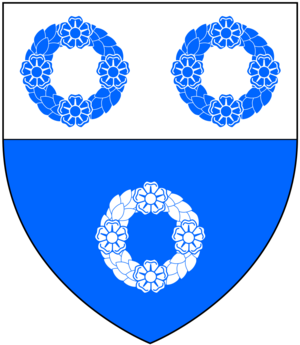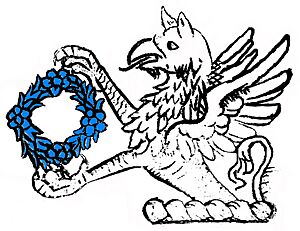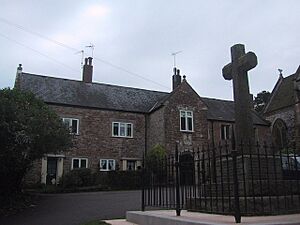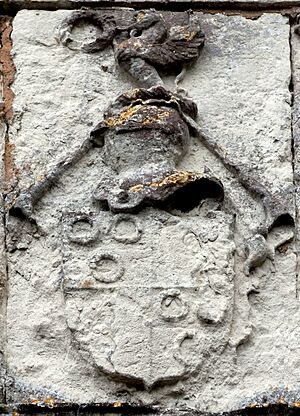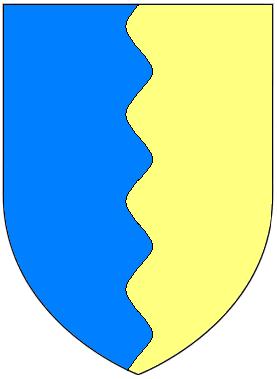Richard Duke (English lawyer) facts for kids
Richard Duke (born around 1515, died 1572) was an important lawyer and government official in England. He worked as the Clerk of the Court of Augmentations. This job helped him gain a lot of land that used to belong to monasteries. These lands became available after King Henry VIII closed down the monasteries. Richard Duke also served as a Member of Parliament (MP) for Weymouth in 1545 and for Dartmouth in 1547. He was also the High Sheriff of Devon from 1563 to 1564.
Contents
Who Was Richard Duke?
Richard Duke was the oldest son of Henry Duke. His father was a merchant from Exeter, a city in Devon, England. His mother was Maud White. The Duke family had lived in Otterton, South Devon, since the time of King Edward III (who ruled from 1327 to 1377).
His Career and Role in Government
Richard Duke studied law at a famous place called the Inner Temple, starting in 1533. In 1536, King Henry VIII created the Court of Augmentations. This court was set up to manage all the properties that the King took over after closing the monasteries.
Richard Duke was given the job of Clerk of the Court of Augmentations for life. He held this important position until the court was closed in 1554. When he lost his job, he received a yearly payment of £133 6s 8d as compensation.
Acquiring Lands and Estates
Soon after becoming Clerk, Richard Duke began to acquire land. In December 1536, he leased Pilton Priory in North Devon. A bigger purchase happened in 1540 when he bought the lands of Otterton Priory. This included a large area around the River Otter in South Devon.
Richard Duke made Otterton Priory his main home. The Duke family owned this estate until 1786. It was then sold to Denys Rolle, who became the largest landowner in Devon. Today, this land is still a big part of the estate owned by Baron Clinton.
In 1542, he bought the manor of Templecombe in Somerset. In 1544, he acquired Brownsea Island in Dorset. In 1546, he and his brother John Duke bought Collaton Abbot in Devon. Richard also received Upper Budleigh from the King. He and his brother also gained other manors in Devon and Somerset.
In 1550, Duke bought several properties from Sir Andrew Dudley. These included the manors of Bishops Teignton, Radway, and West Teignmouth. He also bought the churches and rectories of Bishops Teignton and Radway. This purchase also included the manor of Lindridge.
Buying Chantries
In 1548, Richard Duke bought a former chantry (a special chapel where prayers were said for the dead) in St. Mary de Crypt Church in Gloucester. He bought it with Thomas Bell, a cap maker and former Mayor of Gloucester. This chantry had been set up in 1506 and included money, a house, and other items. It also had income from a stable, a garden, and properties in other towns. Duke and Bell also bought another former obit (a service for the dead) that same year.
Family Life
Richard Duke was married twice:
- His first marriage was to Elizabeth Franke before April 1539. They had one daughter:
- Christina Duke (died 1608). She married twice. Her first husband was George Cobham. Her second husband was Gregory Sprint, who was also a Member of Parliament. Gregory Sprint gained a lot of wealth through this marriage. He lived in Templecombe and Colaton Raleigh, two manors Richard Duke had acquired.
- His second marriage was to Joan Hoby shortly after April 1562. She had been married twice before. Richard and Joan had a son who died as a baby. Joan later married a fourth time to Roger Gifford.
Death and What Happened Next
Richard Duke died on September 8, 1572. He did not leave a will. However, he had arranged for his lands to go to his nephew, Richard II Duke (who died in 1607). Richard II Duke was the son of Richard Duke's brother, John Duke. So, Richard II Duke inherited Otterton and all the other lands. Richard Duke's daughter, Christina, inherited most of his personal belongings.
In 1584, Sir Walter Raleigh, a famous explorer, asked "Mr. Duke, of Otterton" to sell him a property called "Hayes." However, Duke refused Raleigh's offer. People said he didn't want such a powerful person as a close neighbor.
The son and heir of Richard II Duke was Richard III Duke (1567–1641). His memorial plaque is still in Otterton Church. He married Margaret Bassett. An elaborate stone monument in Otterton Church, dated "1589," seems to mark the year of their marriage.
Sources
- Miller, Helen, biography of Richard Duke published in History of Parliament: House of Commons 1509–1558, ed. Bindoff, T., 1982


